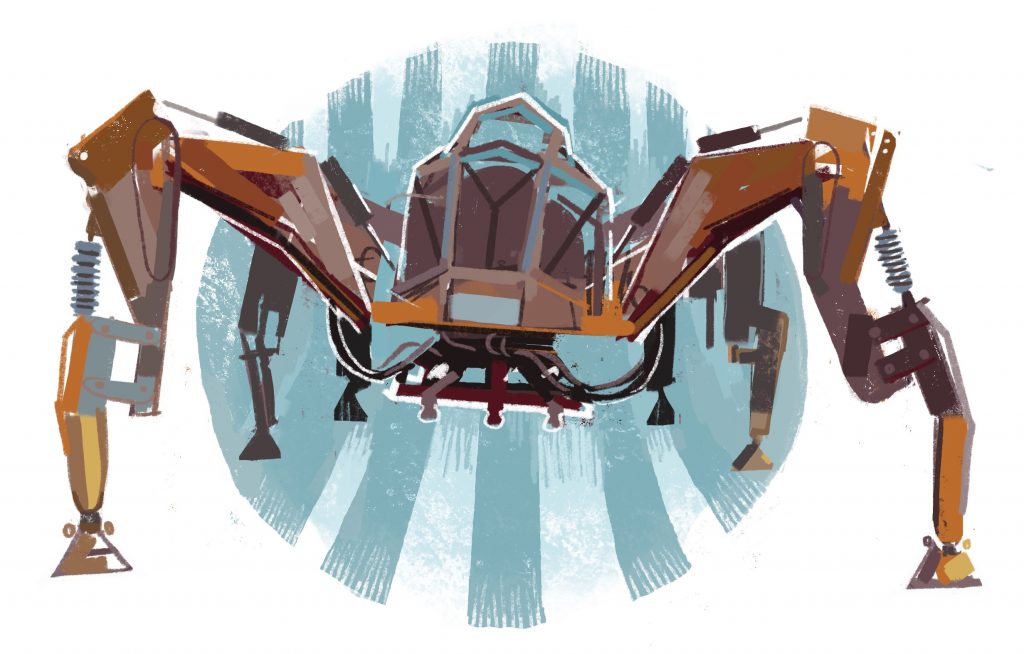Pass through Porter Square in Somerville; head south on Mass Ave; and turn right on Washington Street. Head uphill, along the brick sidewalk, and take another left. Now, look closely, and you might find a giant, six-legged robot.
This is Stompy.

Stompy is what remains of “Project Hexapod”, one of the most optimistic robotics projects of the 2010s. Led by three engineers from Olin College – Gui Cavalcanti, Dan Cody and James Whong – “Project Hexapod” raised $97,817 from 1,571 backers on Kickstarter in 2012. The pitch was simple: they’ll use the money to build a giant, six-legged, human-operated robot. Project Hexapod rewarded its backers with stickers, shirts, and of course, with the chance to take giant robot rides. Stompy was billed as an art object; as a platform for open-source giant robotics; and even as a possible search-and-rescue vehicle for natural disasters.

Stompy fits right in with the zeitgeist of 2012. The same era brought us Google Glass, One Laptop per Child, and the launch of Bitcoin. If we believed in anything, it was that new technology was poised to bring us something great. So why couldn’t 19 earnest engineers on a shoestring budget build a gigantic walking robot?

My boyfriend backed the project and got a ‘Project Hexapod’ t-shirt. In 2019 – 7 years later, long after he mothballed the t-shirt – Stompy took its first tottering steps. When I heard this year that the robot was nearly complete, parked a short walk from my house, I had to see it. I expected there to be a great story behind Stompy. What happened, and why did it take so long to build?

In hindsight, it’s not hard to figure out. The Boston Globe put it well in its 2012 headline: “Robot project takes shape: ‘Stompy’ would normally require millions in funding, but hobbyists progress.” Stompy was, in short, vastly over-scoped for the budget and experience of the team. Their blog documents the gruelling, repetitive work, and the technical setbacks they encountered. The original group of 19 dwindled along with the budget. It took them until 2016 just to finish fabricating Stompy. But the Project Hexapod company fell apart before then, in 2014. Dan, James and Gui all left the project, with Dan and James returning to jobs in the robotics industry. Gui went to co-found a second giant robot project, “Megabots”. He pitched Megabots as a giant robot fighting league for television, raising $554,592 on Kickstarter in 2017. Megabots flopped harder than Project Hexapod: Popular Mechanics called its one episode “hilariously bad.”

When I found Stompy in Cambridge, 9 years after I had first heard of Project Hexapod, I couldn’t help but be delighted (and a bit terrified) by the robot.

Even squatting under a tarp, Stompy is enormous – all spidery legs, thick springs and hydraulic cylinders. While the official project and the robot appeared dead, a video update from 2021 showed Stompy running, and implied that a skeleton crew is still wrenching on it. I don’t think it will ever rescue earthquake victims, and I wouldn’t hold my breath if I was a Kickstarter backer. But I’m glad there are still roboticists and makers who are romantic – and insane – enough to keep trying to build it.
